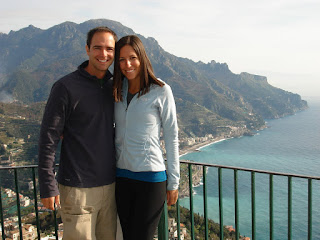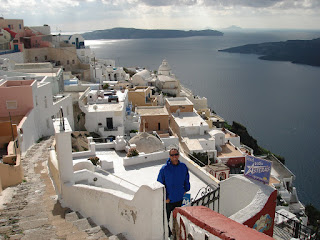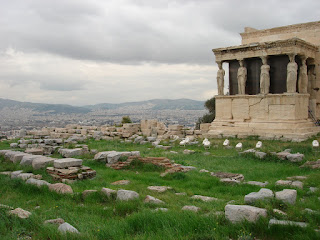 After arriving in Florence on a train from the Amalfi Coast region, we were immediately taken by the charming, yellow Tuscan homes and the maze of narrow, cobblestone city streets. Packed to the gills with street markets and Renaissance treasures, Florence is a very walkable city situated along the Arno River. After wandering around the streets a bit, we crossed the famous Ponte Vecchio bridge, a 14th-century walking bridge lined with jewelry stores. (The bridge was flanked with butcher shops centuries ago, which were replaced when the Medici family deemed them too smelly.) After a long walk through Tuscan neighborhoods south of the city center, we found ourselves at the Piazzale Michelangelo overlooking the city’s skyline. This Piazzale also includes a replica of Michelangelo’s David statue. The original David, finished 1504, is just on the other side of the Arno river in the Galleria dell Academia museum.
After arriving in Florence on a train from the Amalfi Coast region, we were immediately taken by the charming, yellow Tuscan homes and the maze of narrow, cobblestone city streets. Packed to the gills with street markets and Renaissance treasures, Florence is a very walkable city situated along the Arno River. After wandering around the streets a bit, we crossed the famous Ponte Vecchio bridge, a 14th-century walking bridge lined with jewelry stores. (The bridge was flanked with butcher shops centuries ago, which were replaced when the Medici family deemed them too smelly.) After a long walk through Tuscan neighborhoods south of the city center, we found ourselves at the Piazzale Michelangelo overlooking the city’s skyline. This Piazzale also includes a replica of Michelangelo’s David statue. The original David, finished 1504, is just on the other side of the Arno river in the Galleria dell Academia museum.Florence, or Firenze in Italian, is full of piazzas, which are excellent for people watching. One of our favorites was the famous Piazza del Duomo, home to the red, green and white marble Duomo cathedral, known as one of the largest in the world. No matter how far we stepped back, we could not fit the whole church in our photos.

We really enjoyed quaint Florence, but after just one night we headed north to Bolgona. Bologna is one of Italy’s most famous food destinations; tortellini, lasagna, and bolognese sauce (ragu) were all invented there. Despite the bitter cold and snow on the ground, we spent the day walking around the city’s main plaza, Piazza Maggiore, the street markets and escaped the cold for lunch in an Italian café complete with loud, arguing locals.
From Bologna we took a train to Ancona, Italy on the east coast. There, we caught an overnight ferry across the Adriatic Sea to Split, Croatia!





























































